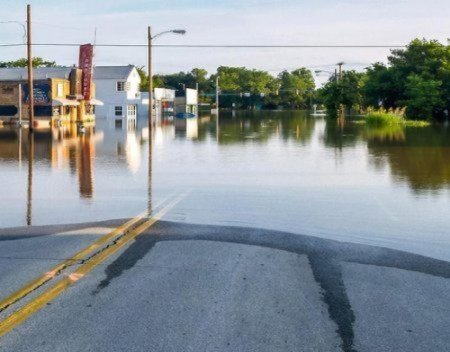
Simple Flood Insurance Tips You Should Know
When considering flood insurance, it's important to ensure that you have adequate coverage and understand the terms and conditions of your policy.
Here are some recommendations to guide you through the process:
Assess Your Risk FEMA Flood Maps: Check the Federal Emergency Management Agency (FEMA) flood maps to determine your flood zone.
Properties in high-risk areas have different requirements and higher premiums.
Local History: Look into the history of flooding in your area to gauge the likelihood of future events.
Types of Coverage Building Property Coverage: This covers the physical structure of your home, including walls, foundation, electrical, and plumbing systems.
Personal Property Coverage: This covers the contents of your home, such as furniture, electronics, clothing, and other personal items.
Coverage Limits and Deductibles Ensure that the coverage limits are sufficient to rebuild your home and replace your belongings in case of a total loss.
Understand the deductibles for building and contents coverage.
Higher deductibles can lower premiums but will increase out-of-pocket costs in the event of a claim.
National Flood Insurance Program (NFIP) The NFIP, managed by FEMA, offers flood insurance to property owners in participating communities.
Policies through the NFIP can be purchased through private insurance agents.
Private Flood Insurance Compare NFIP policies with private flood insurance.
Private insurers may offer higher coverage limits, lower premiums, or additional benefits not available through the NFIP.
Policy Details and Exclusions Review the policy details carefully to understand what is covered and what is excluded.
Standard policies often do not cover basement improvements or contents, mold damage, or temporary living expenses.
Mitigation Discounts Look into flood mitigation measures that could lower your insurance premiums.
These can include installing flood vents, elevating your home, or using flood-resistant building materials.
Timely Purchase Flood insurance policies typically have a 30-day waiting period before they take effect.
Plan ahead and purchase insurance well before the flood season.
Regular Review Regularly review and update your policy to ensure it reflects any changes to your property, its value, or your belongings.
Additional Resources FloodSmart.
gov: The official website of the NFIP provides comprehensive information on flood risks and insurance.
Insurance Agent Consultation: Speak with a knowledgeable insurance agent who can help you understand your options and tailor a policy to your needs.
Conclusion Securing adequate flood insurance involves understanding your risk, choosing the right type and amount of coverage, and staying informed about policy terms and conditions.
By carefully evaluating your needs and options, you can protect your home and possessions from the financial impact of flooding.
I have known Tim for many years and he is a man with great integrity, work ethic and one of the nicest persons I know. Over the years Tim has provided insurance counseling and advice to our company, for myself personally, as well as to our clients. Recently Tim, took time to analyze our flood insurance policy and he was able to make some excellent recommendations. Our flood insurance costs are now less and we have much better coverage. I recommend Tim to anyone without hesitation or reservation.
We contacted Mr. Holt for an estimate via email over the weekend prior to a closing on a property, hoping for a response on the following Monday to take with us with confidence in being insured at the settlement table on a Tuesday. He exceeded our expectations not once but in readily responding to the initial request and then to follow-up questions all during the weekend frenzy that occurs before closing. "Impressive and responsive customer service," for sure!
I have no problem giving you an A1 reference for taking care of the flood policies for me and Diane. I appreciate you working with the mortgage company: the surveyor and our previous agent. The result was a 75% reduction in our flood insurance premiums!